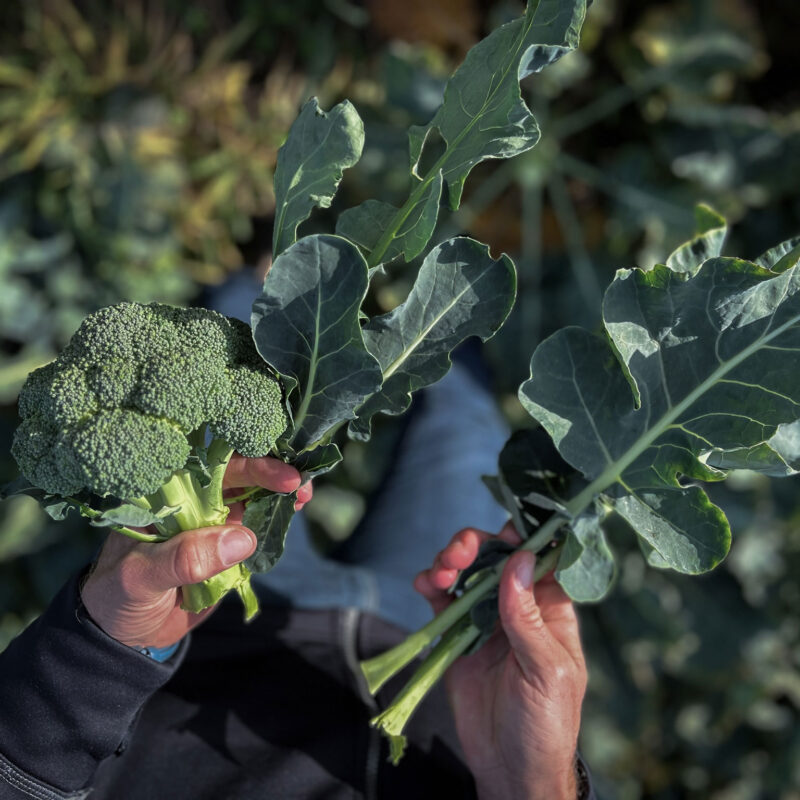A Planetary Menu for Everyday Swedish Meals
2025.10.22

Sausage stroganoff within the planetary boundaries: Chicken sausage stroganoff with oat rice, and raw vegetable salad.
The EAT-Lancet report advocates for a Planetary Health Diet that benefits the climate, human health, and global food security. If its recommendations were widely adopted, global greenhouse gas emissions could be cut in half, and up to 15 million deaths per year could be prevented. But what do the report’s conclusions mean in a local context? And how might the Planetary Health Diet look for an average Swedish family wanting to cook simple, delicious everyday meals? Axfoundation proposes a two-day menu inspired by Swedish favorites.
In early October, the EAT-Lancet Commission released the second edition of its report on healthy diets from sustainable food systems. It primarily advocates eating more whole grains, vegetables, and nuts as part of what is known as the Planetary Health Diet (PHD). This diet can both reduce health risks and lower greenhouse gas emissions, while also contributing to a more secure food supply.
The background is that food production accounts for around 30% of global greenhouse gas emissions. In addition, unhealthy diets are a major risk factor for disease and premature death.
Two-Day Menus Adapted for Different Countries
To showcase a variety of dishes from different parts of the world, EAT-Lancet would like to invite contributions from various countries: two-day menus that are nutritious and delicious – easy to prepare and closely aligned with people’s everyday eating habits.
Some countries, such as Greece and Vietnam, have already adapted the PHD to their local food cultures. For Sweden, Axfoundation was invited to develop a proposal for a two-day menu. Axfoundation’s development team started with some of the most popular Swedish meals and made a few adjustments to the recipes.
– Eating within planetary boundaries shouldn’t be complicated, expensive, or less tasty. Ingredients should be accessible and recipes easy to prepare, says Anna Henning Moberg, Managing Director at Torsåker Farm.
No Pressure to Be Perfect
The two-day menu includes breakfast, lunch, snacks, and dinner. Axfoundation’s team made sure the recipes are practical and won’t make people feel pressured or overwhelmed. Preparation time is roughly the same as what families typically spend on cooking, and the meals are designed to have a familiar flavor profile.
– The goal is to stay as close to people’s everyday routines as possible, so they don’t feel pressured or stressed, says Anna Henning Moberg.
Everyday Favorites on the Plate
Axfoundation analyzed grocery purchase data to identify the most common everyday meals in Sweden. So what tops the list on Swedish dinner tables? Not surprisingly: sausage stroganoff and spaghetti with meat sauce. Unfortunately, both exceed health and climate limits – sausage stroganoff with sausage and cream is high in saturated fat, while meat sauce is based on red meat.
With small adjustments, the dishes become both healthier and have a significantly lower climate footprint. The EAT-Lancet report clearly shows the benefits of eating more whole grains, legumes, and vegetables – something that can be achieved with small adjustments. A simple modification is to replace rice with oat rice, which is a whole grain; swap minced meat for legume mince to easily include legumes; or mix vegetables into the minced meat to help the family eat more greens.
– We want to show that it’s possible to make a difference with simple changes. The EAT-Lancet report is a tool for transforming the global food system – now we need to create tools for people’s everyday lives in different countries and cultures. This menu is an example that stays close to Swedish eating habits and preferences, concludes Anna Henning Moberg.
Get inspired and give it a try! You can find the recipes here →
How We Did It
Two master’s students, Linn Torstensson and Rebecca Johansson from the Swedish University of Agricultural Sciences, carried out part of the initial work at Axfoundation. They mapped Sweden’s most common everyday meals, resulting in a master’s thesis in food science: Swedish Food Habits for Higher Nutritional Value and Lower Climate Impact. This study served as the foundation for Axfoundation’s two-day menu, developed at the request of the EAT-Lancet Commission.
Based on sales statistics and customer behavior patterns, the ten most frequently prepared dishes among Hemköp and Willys customers were identified. Among them were sausage stroganoff and spaghetti with meat sauce.
What Is the Planetary Health Diet (PHD)?
In 2019, the EAT-Lancet Commission introduced the Planetary Health Diet (PHD) – a universal reference diet designed to improve human health, reduce greenhouse gas emissions, and ensure global food security.
The PHD is a flexitarian diet, primarily composed of plant-based foods such as vegetables, fruits, whole grains, legumes, nuts, and unsaturated oils. It also includes moderate amounts of fish and seafood, poultry, dairy, and eggs. Red meat (beef, lamb, and pork) is included only in small quantities.
What Is the EAT-Lancet Commission?
The EAT-Lancet Commission consists of 24 scientists from 17 countries across multiple disciplines. It is chaired by Johan Rockström (Potsdam Institute), Walter Willett (Harvard), and Shakuntala Thilsted (CGIAR), with support from Line Gordon (Stockholm Resilience Centre).
The first EAT-Lancet report (2019), published in The Lancet, was the first to link food systems to both human health and climate impact. The latest EAT-Lancet report was released in October 2025.
It shows that seven out of nine planetary boundaries have already been exceeded, five of which are directly linked to global food systems. The Commission also estimates the potential health and life-saving benefits if more people adopt the recommended diet.
The core principles of EAT are that food should be healthy, accessible to everyone, and produced, distributed, and consumed within planetary boundaries. To achieve climate and health goals, the Commission recommends reducing red meat consumption to about 15 grams per day on average and increasing the intake of whole grains, legumes, and vegetables.
























































